
|
|||||||
|
|||||||
Mesoraca
Acknowledgment
Italian text and images kindly provided
by the multi talented artist Carlo Cistaro. Originally from Mesoraca now living in Milan. 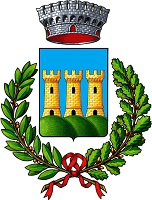
The characteristic hamlet of Mesoraca is located in the province of Crotone, approximately 50km away from the homonymous ancient city of Crotone, one of Calabria's first Greek colony. It was founded 1600 years BC by the Enotri tribes and was known by the ancients Greeks as Mesorachìon.
The emblem of Mesoraca consists of a shield with three towers. The towers, on top of the three cliffs represent the tripled walled tower of the castle, the cliffs symbolize the constancy of the people and the red ribbon represents the indomitable fervor which distinguished them in battle. The city of Crotone (Kroton) itself was founded in the year 710 BC by Greek Acheans, therefore the origins of the hamlet can be traced back to the time when this northern part of Calabria and Basilicata was known as Enotria, land of wine.
It was consequently occupied by the Romans and in the Middle Ages became part of the powerful abbey of Sant' Angelo in Frigillo under the protectorate of Frederick the 2nd King of Swabia and the popes that followed. There are still some remains of the abbey. 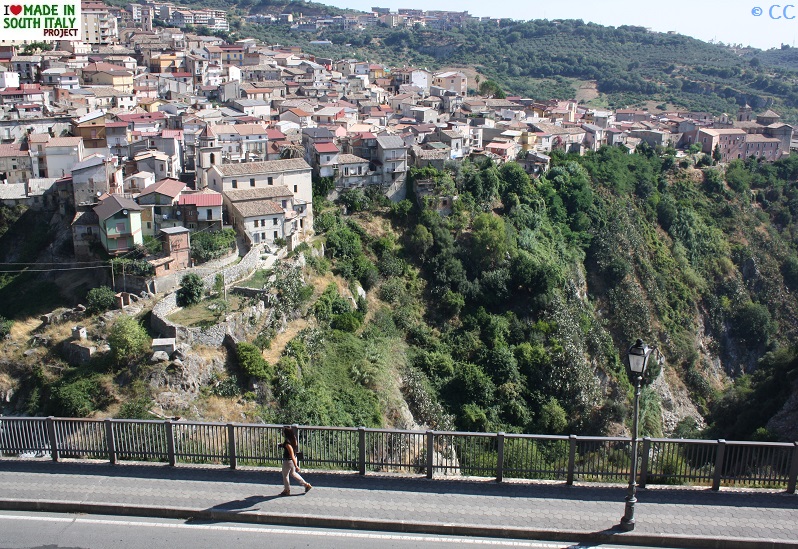 The town rises on a rocky hill , demarcated by the river Reazio and Vergari . Last town of the Marchesato territory and the first in proximity to the vast mountain territory of the Sila National Park to which it belong. Two ancient old bridges connect the visitors to the old historical Centre via an entry gate known as " U Gafiu" allowing access to the main square.
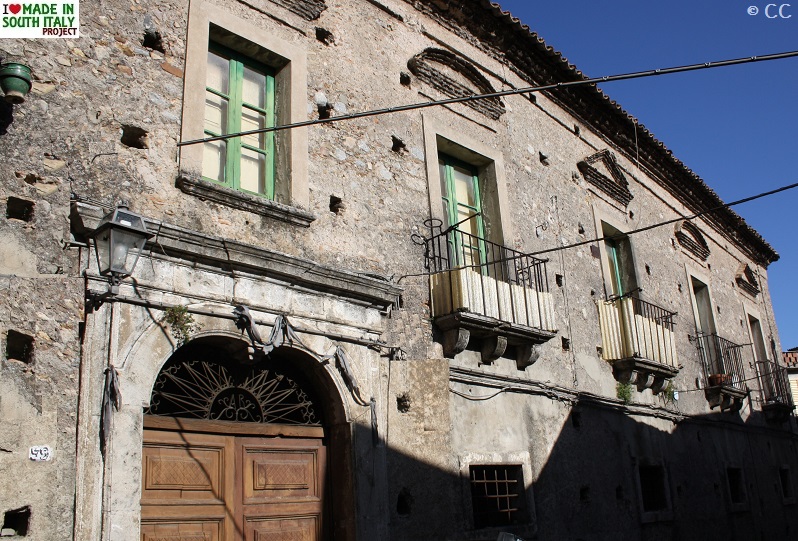 The small town square is surrounded by Seventeenth century old palaces, among which, stands out the Stranges-Longobucco palace, birthplace of the philosopher mesorachese Vincenzo De Grace.
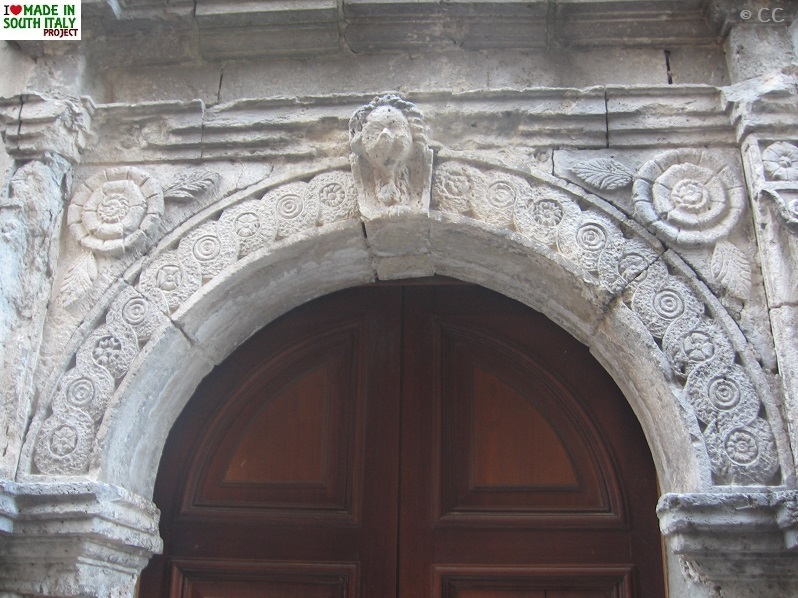 The town square is, as usually, the starting point of a network made up of a maze of narrow streets and a few main ones such as Via Magna Grecìa and Via Roma, all leading to the old part of the town made up of seventeenth and eighteenth century fashionable baronial houses, most of them adorned with beautiful portals and balconies built by using local stones.
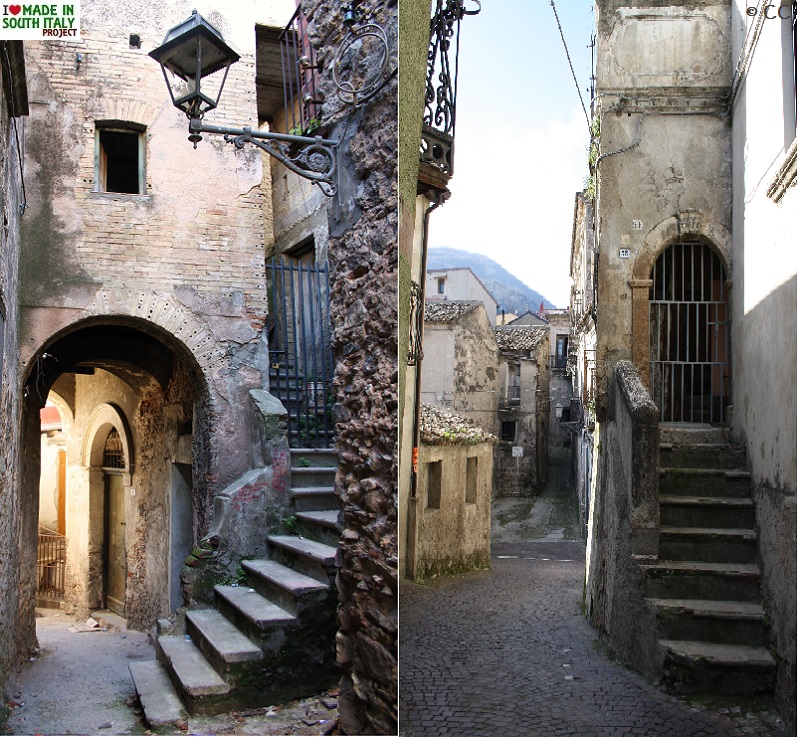 Hallways and courtyards of different shapes and sizes, homes and palaces such as Marescalco, Pollizzi, Alessio Rossi, Spinelli, La Rosa, Grisolia and Tesoriere.
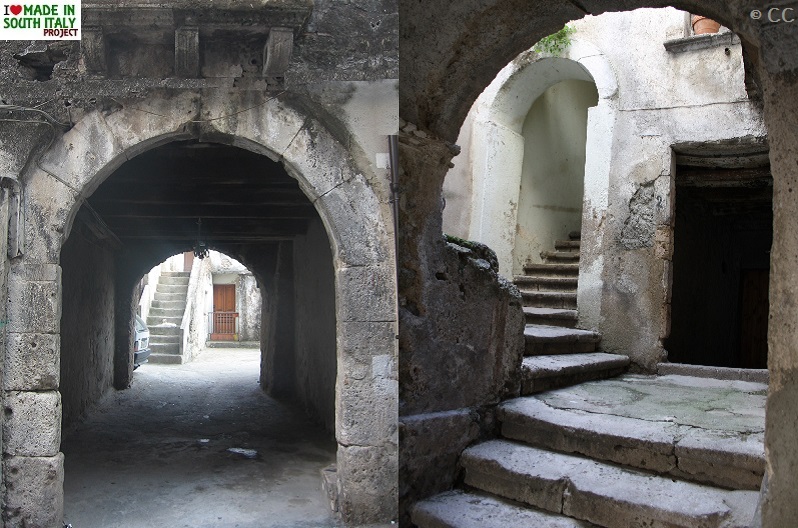 The narrow streets lead to the much smaller, less conspicuous but characteristic homes of the working people featuring the "mignani" (landing stairs/balcony) and the arches that mark the streets, interspersed with a maze of stairways.
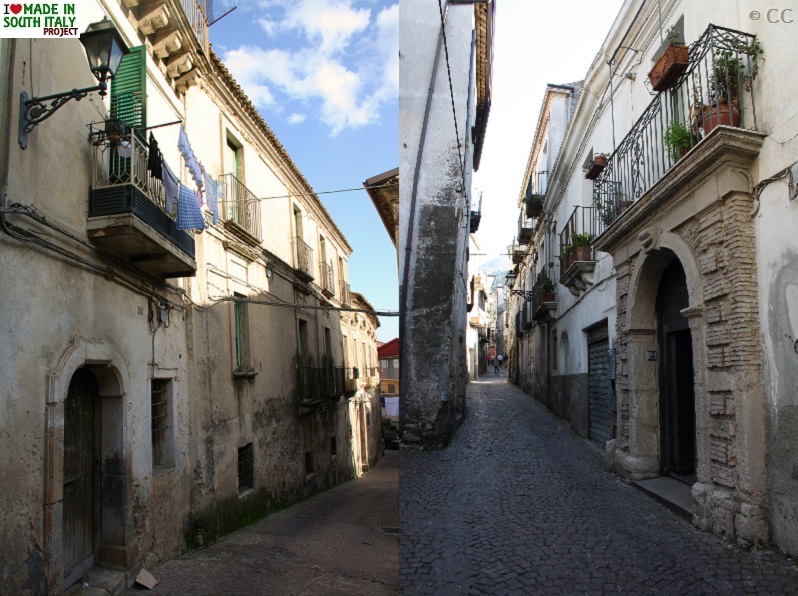 Located at the beginning of Via Magna Grecia is the baroque style Church of the Candelora, dedicated to St Nicola and Giovanni Battista. Not far, on this same street, we find the majestic church of the Retreat (Chiesa del Ritiro) with its facade entirely carved in stone .
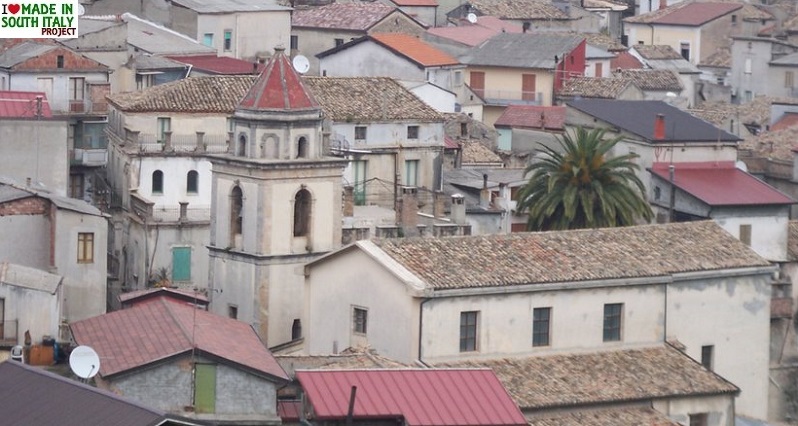 It is undoubtedly the best example, and currently one of the late Baroque in Calabria. As well as spiritual and cultural cradle for priests and the education of the population, the retreat was also a place of penance, where political convicts were serving the sentences practicing spiritual activities. There are seven others, all of them very old . 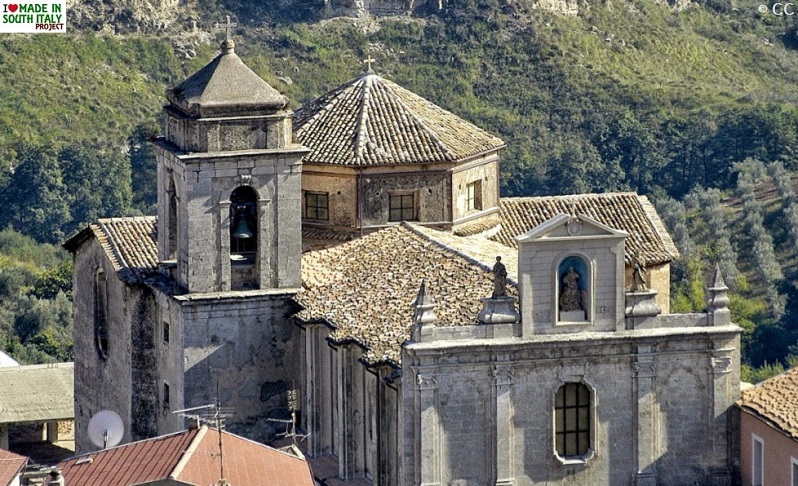 The interior presents itself in a Baroque style, with masterfully painted ceilings. It is decorated with nine altars in polychrome marble inlaid from Carrara, with bas-reliefs and sculptures of angels. The dome, which depicts 125 characters, is the most painted of Calabria.
Not surprisingly, it is officially declared a 'Monument of National Interest'.
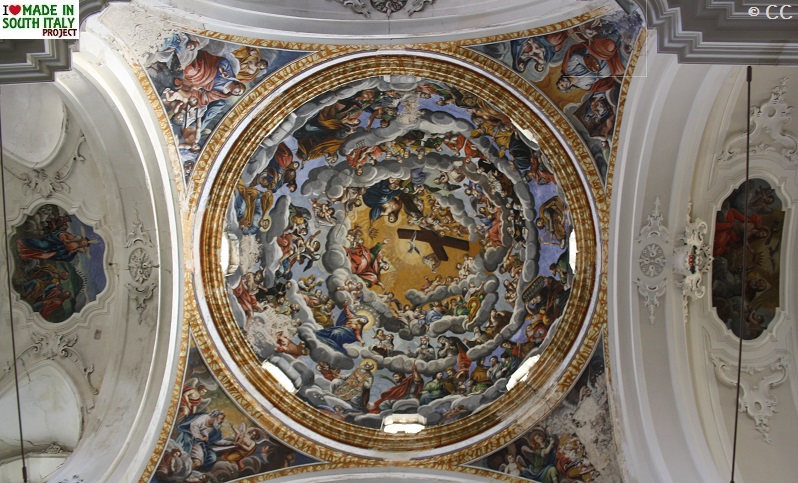 The shape of the structure, true to those times, is that of a Latin cross with a triumphal arch separating the nave from the rest of the church topped with a ceiling painted dome . Six are the niched chapels on either side of the nave. Above each altar there is a painting on canvas.
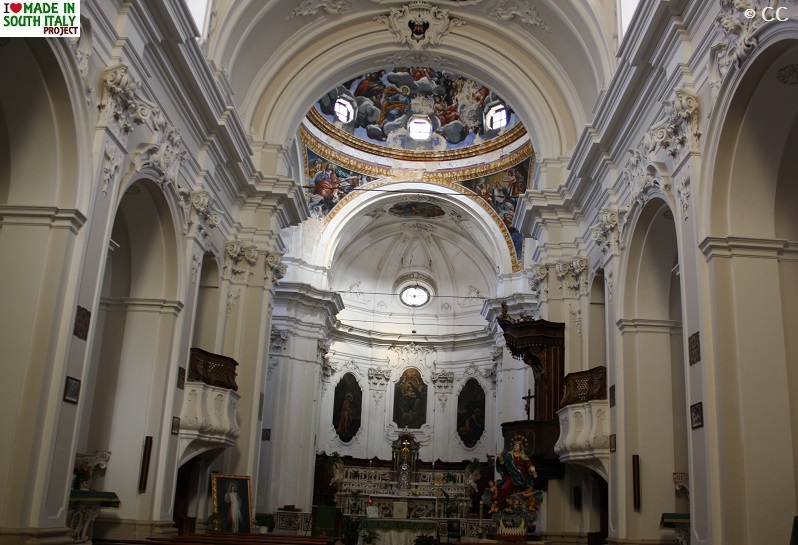 Almost all the paintings in the church, punctiliously required by the founder, refer to the life of the Virgin.
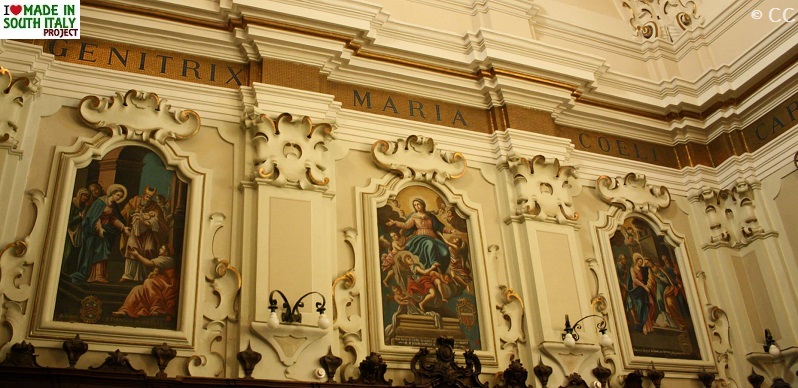 The altar is framed with stucco cornices, adorned with paintings depicting scenes from the Calvary of Jesus. 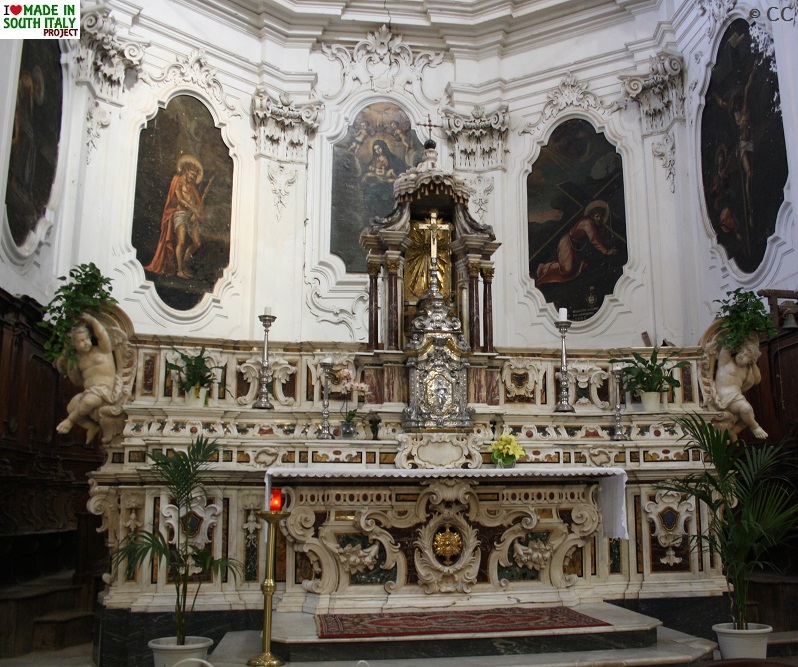 Selected for you.
The Convent along with the church, was built in 1429.
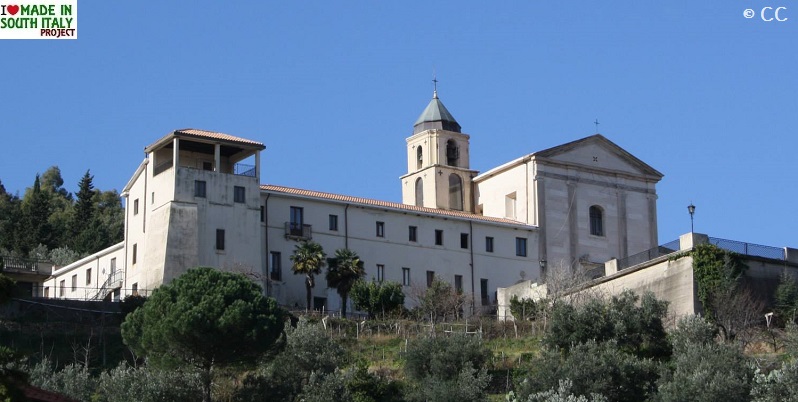 According to local traditions, existence of a yet older complex goes back to the IV century and was still in existence by the year 1419.
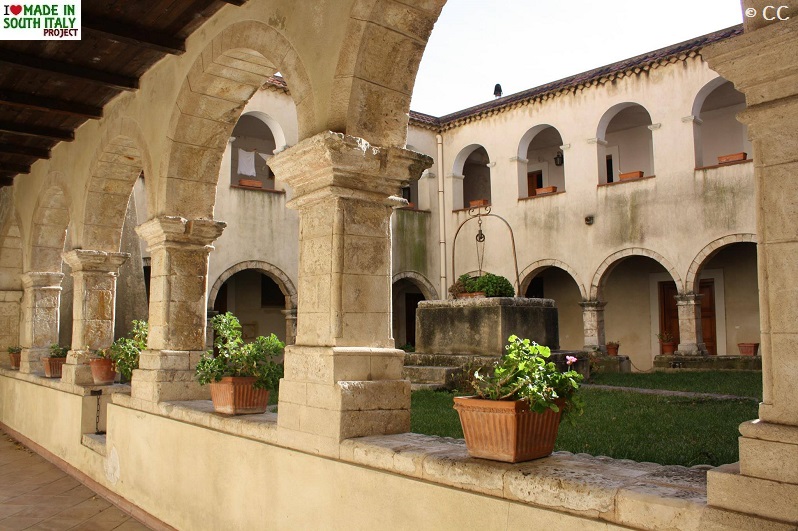 The interior of the church has a nave with a vaulted ceiling and five side chapels with an altar in each. The main altar is dedicated to Our Lady of Grace (Madonna della Grazia). The vault of the church in 1754-55 was decorated with frescoes by Domenico Leto.
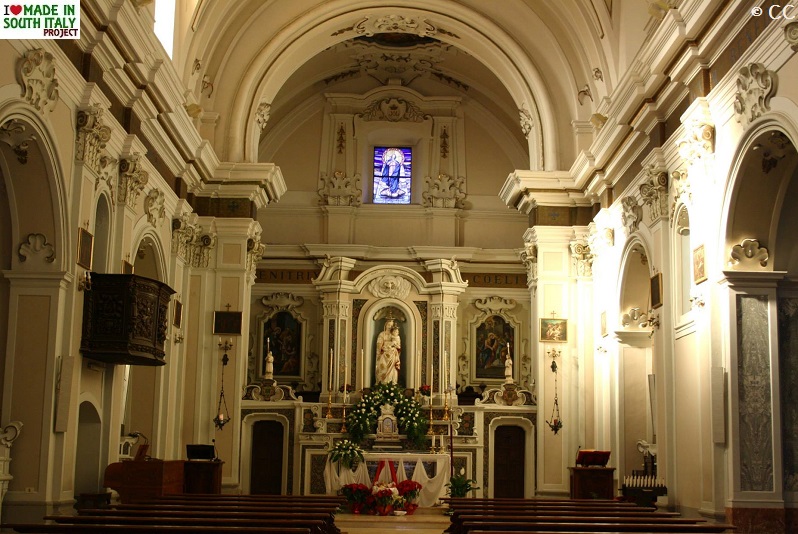 The chapel of the SS. Ecce Homo opens on the right side of the aisle.
The dominant feature of the chapel is the altar, built in 1934. At the center of the altar there is the niche that contains the wooden bust of the Redeemer. The altar, as the two sides and the Ecce Homo, are decorated with plaster work imitating marquetry, fine work by Domenico Costa Strongoli, 1739. 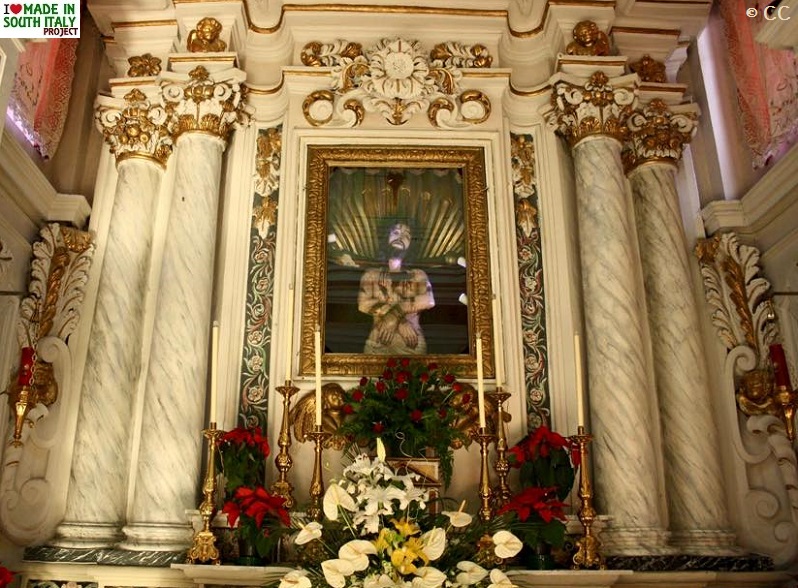 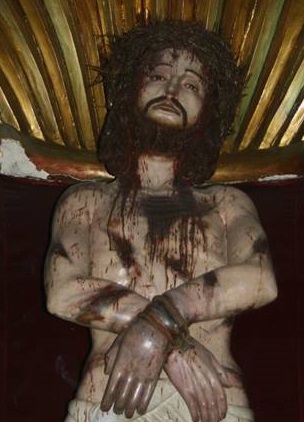 The statue of the SS . Ecce Homo is carved in wood, half-length, a real jewel of art and faith: it is the eloquent expression of the martyr who suffers with resignation and even with deep joy that shines above all in the eye. The statue of the SS . Ecce Homo is carved in wood, half-length, a real jewel of art and faith: it is the eloquent expression of the martyr who suffers with resignation and even with deep joy that shines above all in the eye.According to legend, the statue was made from an olive tree trunk felled by thunder . The expressive eyes is not the work of man, but that of Angels,(legend goes) to help the sculptor overcome the difficulties of the work. What arouses deep compassion, some scholars wrote, is the verismo (realism) expression of the suffering concentrated in the face. Insightful eyes, expressing not rebellion or condemnation, but meekness and forgiveness. "They look at you and penetrate deeply into your heart". The statue depicts Christ scourged, severely bleeding, with his wrists tightly bound by a rope, crowned with thorns .
It is the man presented to the Jews by Pontius Pilate requesting clemency: "Ecce Homo" - Behold the Man ", are the Latin words used by Pilate in the Vulgate translation of John. The miraculous image was commissioned in 1630 by Brother Humble Pintorino who died a few years later in Palermo, Sicily. 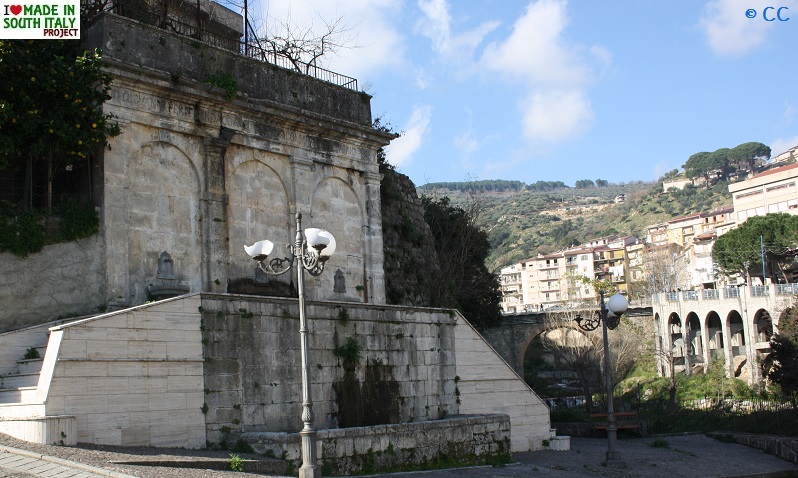 Yearly events : 'A fera e maju' - May's fair takes place during the last week of May along the road leading to the Sanctuary of S.S. Ecce Homo. The event began as a pilgrimage of devotion to the shrine for saving the inhabitants from the terrible earthquake of 1783.
Ai nostri visitatori piace il Sud Italia, vuoi dire loro qualcosa?
Il nostro obiettivo e' quello di promuovere prodotti tipici del Sud in un contesto di marketing globale, e allo stesso tempo proporre il nostro Meridione come alternativa turistica, ben consapevoli che il successo dell'uno è essenziale per il successo dell'altro. Paesi di provenienza dei visitatori in ordine numerico Stati Uniti - Canada - Italia - Gran Bretagna - Australia - China - Germania - Francia - Nuova Zelanda - Olanda Coloro interessati ad inserire la loro attivita'/azienda/ nel sito
  Made in South Italy Today.com-2014-Hamilton-Ontario-Canada |||||||| CMS by AlboDigital |||||||| Copyrights issues |

|
||||||



